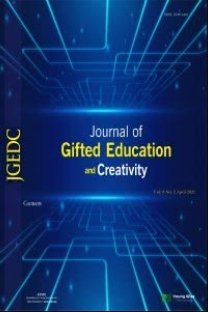Giftedness and Identification
giftedness, identification
Giftedness and Identification
giftedness identification, athletic,
___
- Bruner, J. (1977). The process of education. Cambridge, MA: Harvard University Press.Chi, M.T., Feltovish, P.J., & Glaser, R. (1981). Categorization and representation ofphysics problems by experts and novices. Cognitive Science, 5, 121-152.
- Corpley, A. (2000). Defining and measuring creativity: Are creativity tests worth using?Roeper Review, 23, 72-79.
- Csikszentmihalyi, M. (1994). The domain of creativity. In D. Feldman, M.Csikzentmihalyi, & H. Gardner (Eds.). Changing the world: A framework for the study ofcreativity. Westport, CT: Praeger Publishing.
- DeGroot, A.D. (1965). Thought and choice in chess. The Hague: Mouton.
- Davis, G.A., & Rimm, S.B. (1998) Education of the gifted and talented (4th ed.). NeedhamHeights, MA: Allyn and Bacon.
- Feldman, D.H., Csikzentmihalyi, M., & Gardner, H. (1994). Changing the world: Aframework for the study of creativity. Westport, CT: Praeger Publishing.
- Feldhusen, J.F. (1995). Creativity: Knowledge base, metacognitive skills, and personalityfactors. Journal of Creative Behavior, 29, 255-268.
- Gallagher, J.J., & Gallagher, S.A. (1994). Teaching the gifted child (4th ed.). NeedhamHeights, MA: Allyn and Bacon.
- Gardner, H. (1994). Creating minds. New York: Basic Books
- Lipshitz, A., & Waingortin, M. (1995). Getting out of ruts: A laboratory study of acognitive model of reframing. Journal of Creative Behavior, 29, 151-172.
- Lynch, M.D. & Harris, C.D. (2001). Fostering creativity in children, K-8. Boston, MA: Allynand Bacon.
- Marzano, R.J., Brandt, R.S., Hughes, C.S., Jones, B.F., Presseisen, B.R., Rankin, S.C., &Suhor, C. (1988). Dimensions of thinking. Alexandria, VA: The Association forSupervision and Curriculum Development.
- Maslow, A. (1971). The farther reaches of human nature. New York: Viking Press.
- Maslow, A. (1968). Toward a psychology of being (3rd ed.). New York. John Wiley andSons, Inc.
- May, R. (1975). The courage to create. New York. Norton.
- Miller, J. (2001). The holistic curriculum (2nd ed). Buffalo, NY: University of Toronto Press
- Naglieri, J. & Kaufman, J. (2001). Understanding intelligence, giftedness, and creativityusing PASS theory. Roeper Review, 23, 151-156.
- Piirto, J. (1994). Talented children and adults: Their development and education. New York: Macmillan.
- Rogers, C. (1961). On becoming a person. Boston, MA. Houghton Mifflin Company. Starko, A. J. (2005). Creativity in the classroom: Schools of curious delight (3rd. ed). Mahwah,NJ: Lawrence Erlbaum.
- Sternberg, R.J. & Grigorenka, E. (2000). Teaching for successful intelligence. ArlingtonHeights, IL: Skylight Professional Development.
- Sternberg, R.J., & Lubart, T. (1991). Creative giftedness: A multivariate investmentapproach. Gifted Child Quarterly, 37, 7-15.
- Sternberg, R.J. Williams, W.M. (2002). Educational psychology. Boston, MA: A PearsonEducation.
- Swartz, R.J., & Perkins, D.N. (1990). Teaching thinking: Issues and approaches. PacificGrove, CA: Midwest Publication.
- Torrance, E. P. (1993). Understanding creativity: Where to start? Psychological Inquiry, 4,232-234.
- Torrance, E.P. (1999). Torrance Test of Creative Thinking: Norms and technical manual.Beaconville, IL. Scholastic Testing Services.Wallas, G. (1926). The art of thought. New York: Harcourt,
- Yayın Aralığı: Yılda 4 Sayı
- Başlangıç: 2014
- Yayıncı: Genç Bilge Yayıncılık
Kitap Eleştiri ve İncelemesi: Kaplan Anne’nin Zafer Marşı
Merve TOPAL, Hasan Said TORTOP
Periyodik Tabloda Elementlerin Yerini Bulmada Farklı Bir Bakış Açısı
Hülya DEMİRCİOĞLU, Selma VURAL, İşık BOZ
Üstün Yetenekli Öğrenciler İçin Bireyselleştirilmiş Eğitim Planı Geliştirme1
Film İncelemesi: Little Man Tate Filmi’nin Üstün Yetenekliler Eğitimi Açısından İncelenmesi
Merve TOPAL, Hasan Said TORTOP
